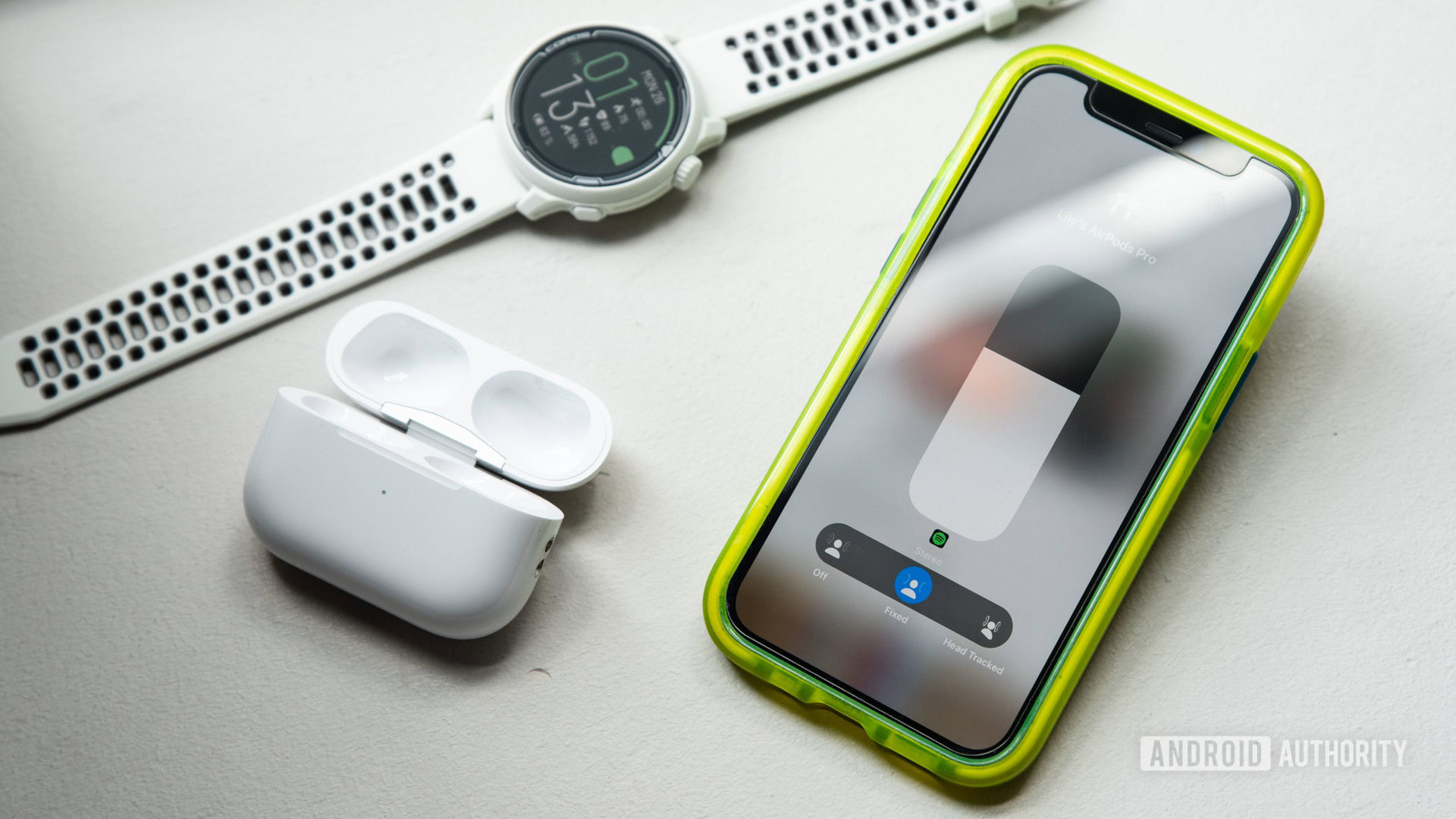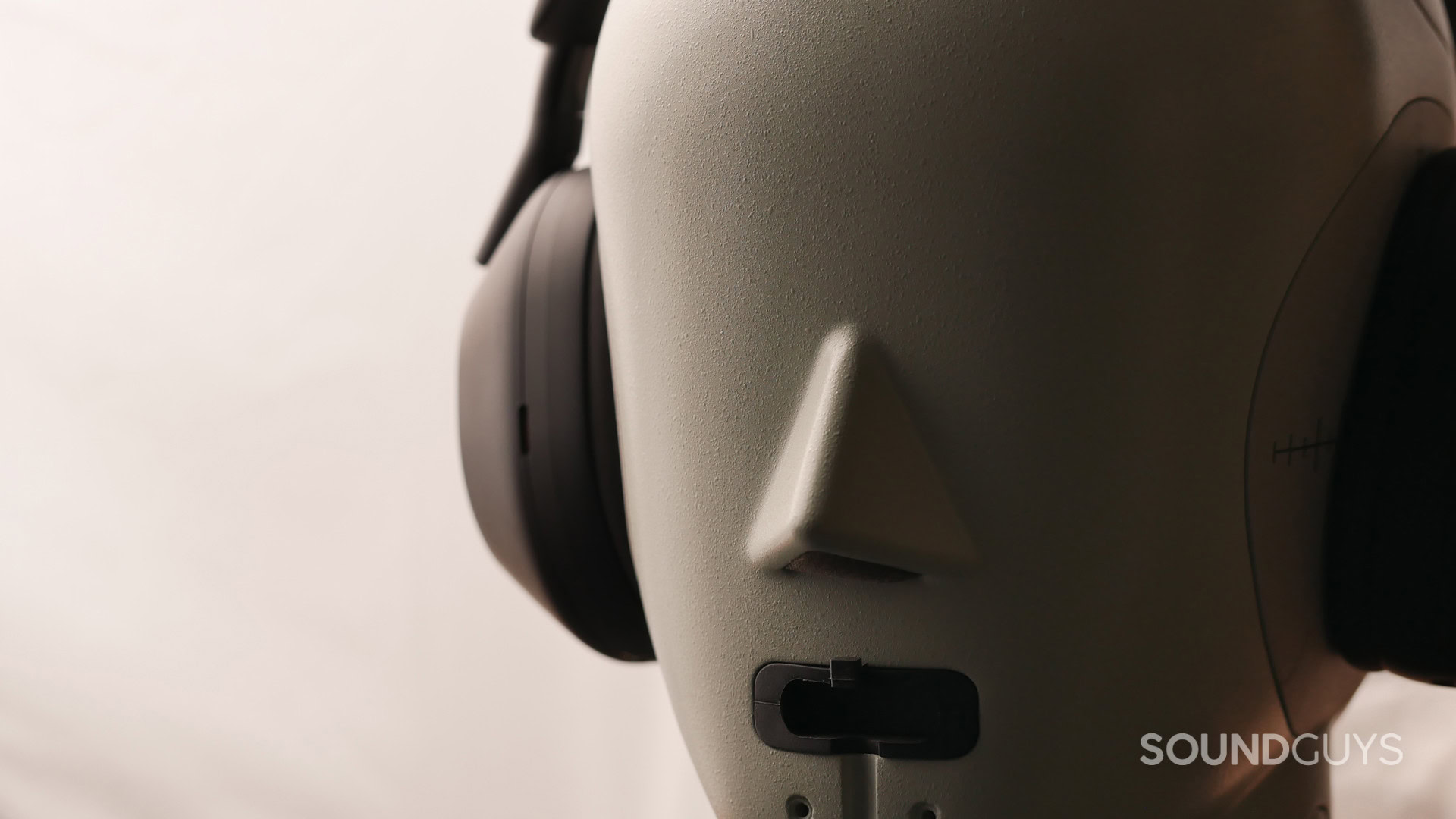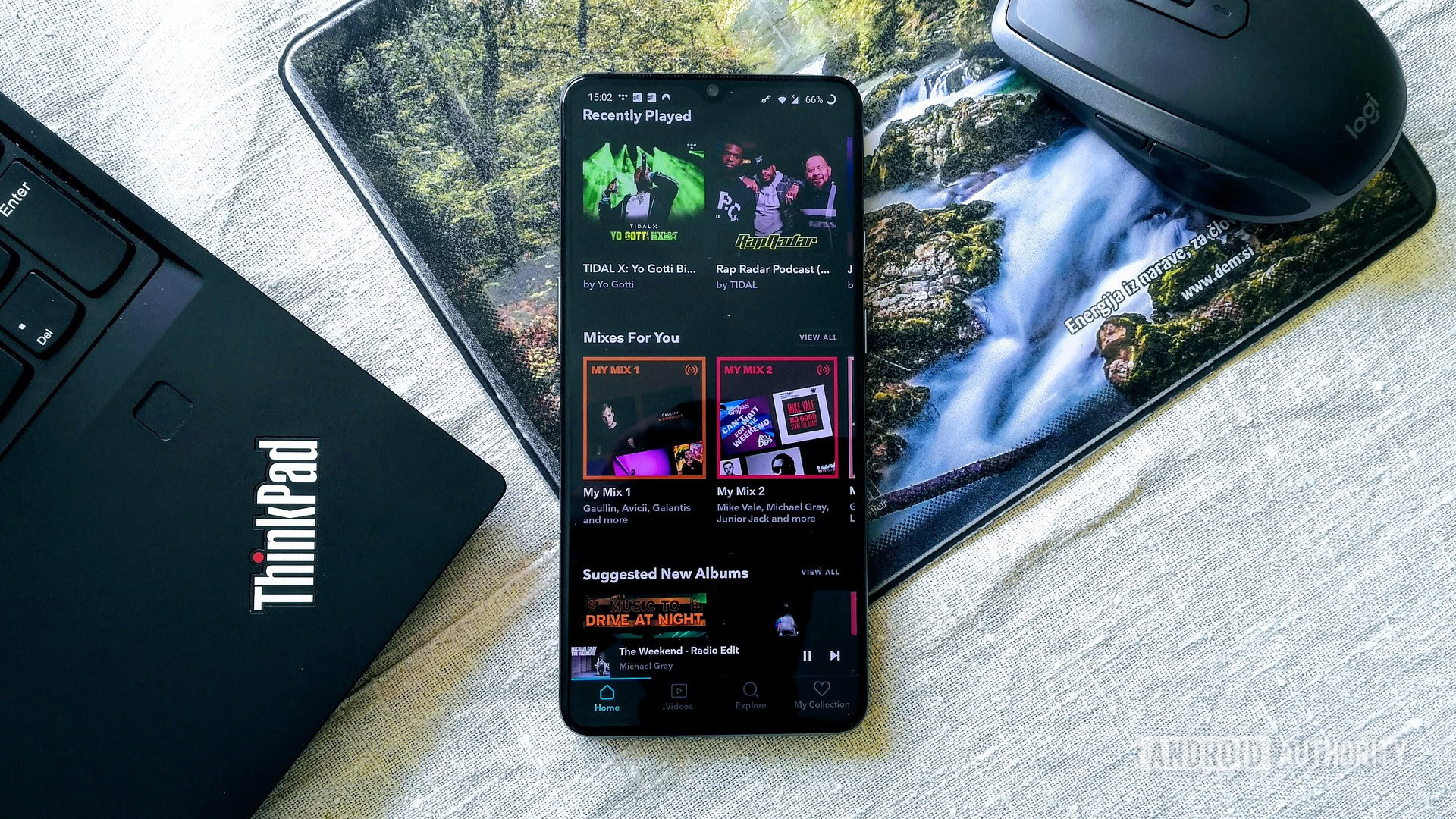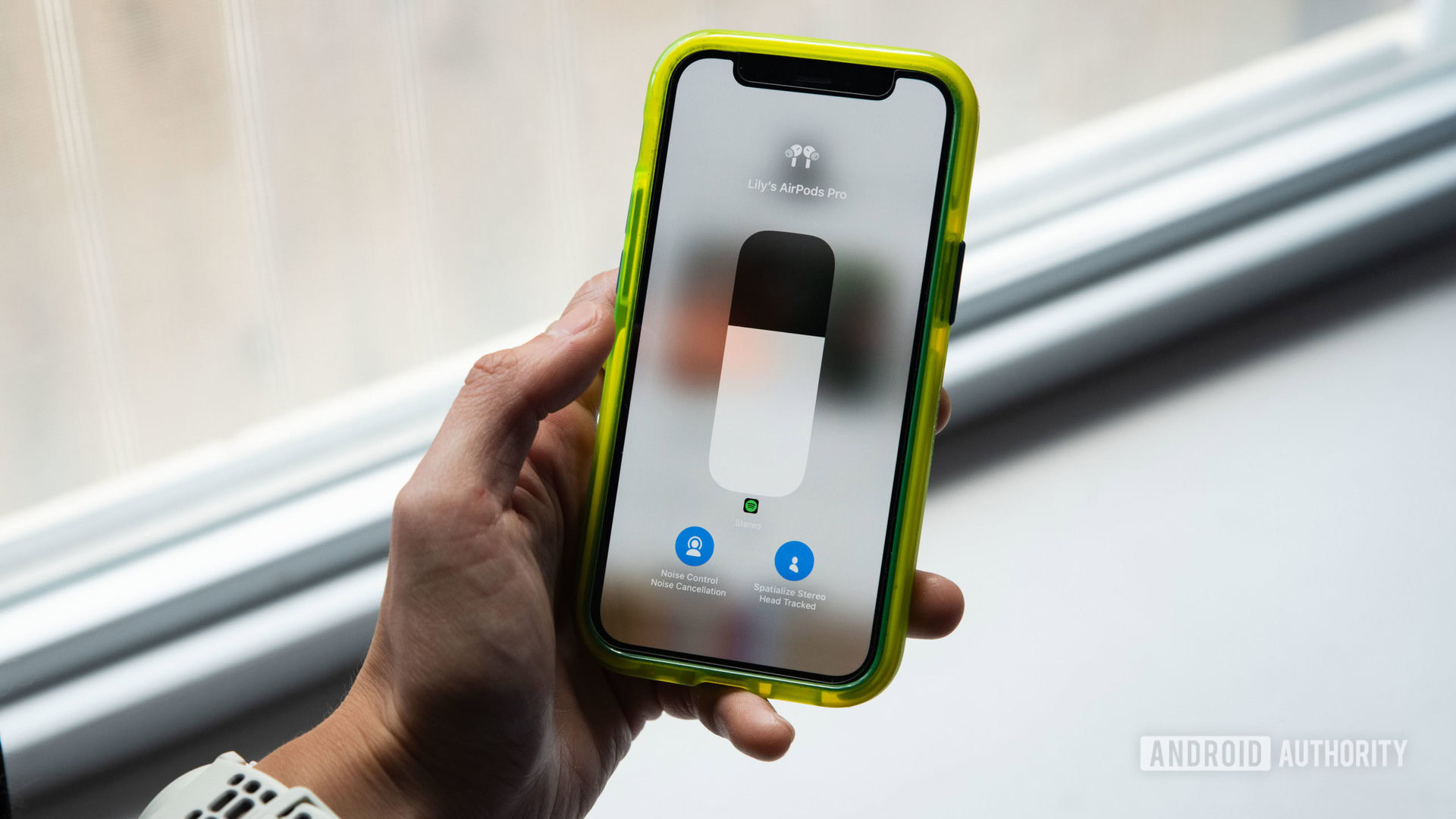Affiliate links on Android Authority may earn us a commission. Learn more.
What is spatial audio and is it worth using?

Surround sound makes watching movies at a theater that much more exciting than from your couch. The advanced speaker array creates an immersive experience that an increasing number of us want to recreate at home.
But what if you don’t have multiple speakers peppered throughout your living room? That’s where spatial audio comes in. Using technology and some advanced mathematics, it allows a pair of headphones or earbuds to sound like an advanced, multi-channel speaker system.
What is spatial audio?
Spatial audio is just another term for immersive, 360-degree sound that’s typically featured in headphones and earbuds. Spatial audio builds upon object-based audio and places “audio objects” in 3D space, allowing them to move as the listener moves (head tracking) or as a scene plays out. This is a much more advanced form of listening compared to standard stereo playback, and it takes height into account. As a helicopter flies above a main character in a scene, you’ll hear that effect as it moves across the setting.
How does human hearing affect spatial audio?
To understand what spatial audio (aka “virtual surround”) is and how it works, you’ll need a basic understanding of how human hearing works. Having two ears allows our brains to determine the direction and source of a sound. For example, if a sound originates to your right, then your right ear will pick it up first. Moments later, your left ear will detect that same sound. This delay communicates from where a sound originates, but it gets more complicated.
Spatial audio basically tricks our brains into thinking sounds are moving all around us, rather than just on the left or right.
Perceiving sound doesn’t stop at the ears. The head-related transfer function (HRTF) refers to how our head size, head position, and ear anatomy affect sound waves before they contact our eardrums. When sound waves interact with our bodies, it affects the timing and levels of the sounds themselves. Our brain uses all of this information to understand from where a sound originates.
Extending this to speakers is pretty straightforward. Placing multiple speakers in a room allows sounds to originate from various locations, travel a certain distance, interact with your physicality, and reach your ears.

But what if you’re listening through headphones? Headphones encompass your ears with drivers right next to them. In the case of earbuds, the drivers are literally down your ear canals, and sound waves don’t even interact with your outer ears. At that point, your brain is just interpreting what sounds are coming from the left and what sounds are coming from the right. Some headphones use multiple drivers in each ear cup for “true surround,” but this makes for a bulky, heavy headset. Nevertheless, there are some models that do this, and they can work with any standard home theater receiver to create surround sound effects. True surround headphones have drawbacks, mainly that turning your head could shift everything out of alignment and break the immersive experience.
Virtual surround sound doesn’t add weight to a headset and opens the door for things like head tracking. This software requires headphones or earbuds and some advanced math, signal processing, and HRTF-based algorithms. After all of this, the listener is left with a unique surround sound that places “sound objects” all around them.
How does spatial audio work?

Spatial audio relies on a highly advanced digital signal processor (DSP). This can be inside the headphones, the playback device, or an external add-on.
Spatial audio needs content that’s been specifically mixed for it. That means many retro and vintage recordings won’t work (unless they get remixed), but many modern tracks do receive this treatment. Right now, spatial audio is more prevalent in movies than in music. However, an increasing number of songs and streaming services offer it, like Deezer, TIDAL, and Amazon Music Unlimited.
In order to account for your personal HRTF, many streaming services and headphone manufacturers offer personalization. With your permission, you’ll scan your ears into an app, and the specific algorithm will optimize the spatial audio output for your anatomy. You can also take advantage of the default spatial audio settings with various earbuds, headphones, and streaming services. Companies have proprietary methods of creating a default immersive sound, which can be done by scanning many ears, using a physical model of a human head, or both.
Instead of sounds being 'points' in space, sounds are interpreted as 'objects' that can move and change over time.
For a real-world analog, consider an ambulance driving past you. Not only does it get louder the closer it gets to you, but the pitch of the siren changes as it approaches and departs. In order for spatial audio to create convincing surround sound, these kinds of changes and effects must happen for every single audio object. If you don’t think a pair of headphones can do this, try listening to a binaural audio YouTube video for yourself.
Effective spatial audio requires a lot of computing power and math. Digital signal processors have shrunk and become more affordable over the years, allowing for spatial audio to become ubiquitous. The processing separates spatial audio technologies from one another, like Dolby Atmos versus DTS Headphone:X. All of them use the same basic idea and result in a similar sound, but their implementations vary.
Is spatial audio worth using?

Whether spatial audio is worth it or not comes down to each individual listener. We can tell you that spatial audio makes a perceptible difference in how your content sounds.
Headphones that support personalized spatial audio tend to be much more expensive than their simple counterparts. For the best outcome, you really do need a good DSP, hardware, and general audio tuning. More and more movie soundtracks are mixed for spatial audio, but that’s not the default for music. Only some streaming services support spatial audio, and even then, it’s limited.
You’ll also run into quality inconsistencies across various proprietary spatial audios. Dolby Atmos, Apple Spatial Audio, Windows Sonic, and more are all different. Some of these can actually make even non-spatial content sound more immersive, but it won’t be exactly like true spatial content.
Spatial audio works best with compatible content and headphones when you have the time to truly enjoy the experience.
Before you take the plunge into the spatial audio space, you’ll need to decide a few things:
- What streaming service you’ll use.
- The headphones you want to buy.
- Your preferred audio content.
- Where you plan to listen to the audio content.
Spatial audio doesn’t make much sense if the only time you listen to music is at the gym. It may also not be the best option for those who only stream videos during their commutes. We recommend listening to spatial audio content from a quiet, controlled environment, so you don’t find it distracting.
What devices support spatial audio?

Certain video game consoles and headsets have a proprietary version of spatial audio. PlayStation 3D Audio, for instance, works on any set of headphones, provided you have a PlayStation 5. Some gaming headsets, such as the HyperX Cloud Flight S, support surround sound, too. Many smartphones — including the Samsung Galaxy S23 with Dolby Atmos support — also have some form of spatial audio.
Keep in mind that even if your device and headset support the same type of spatial audio, you still need content mixed with it in mind. It’s likely easiest to stick with one audio standard and build your collection for that, rather than hopping around.